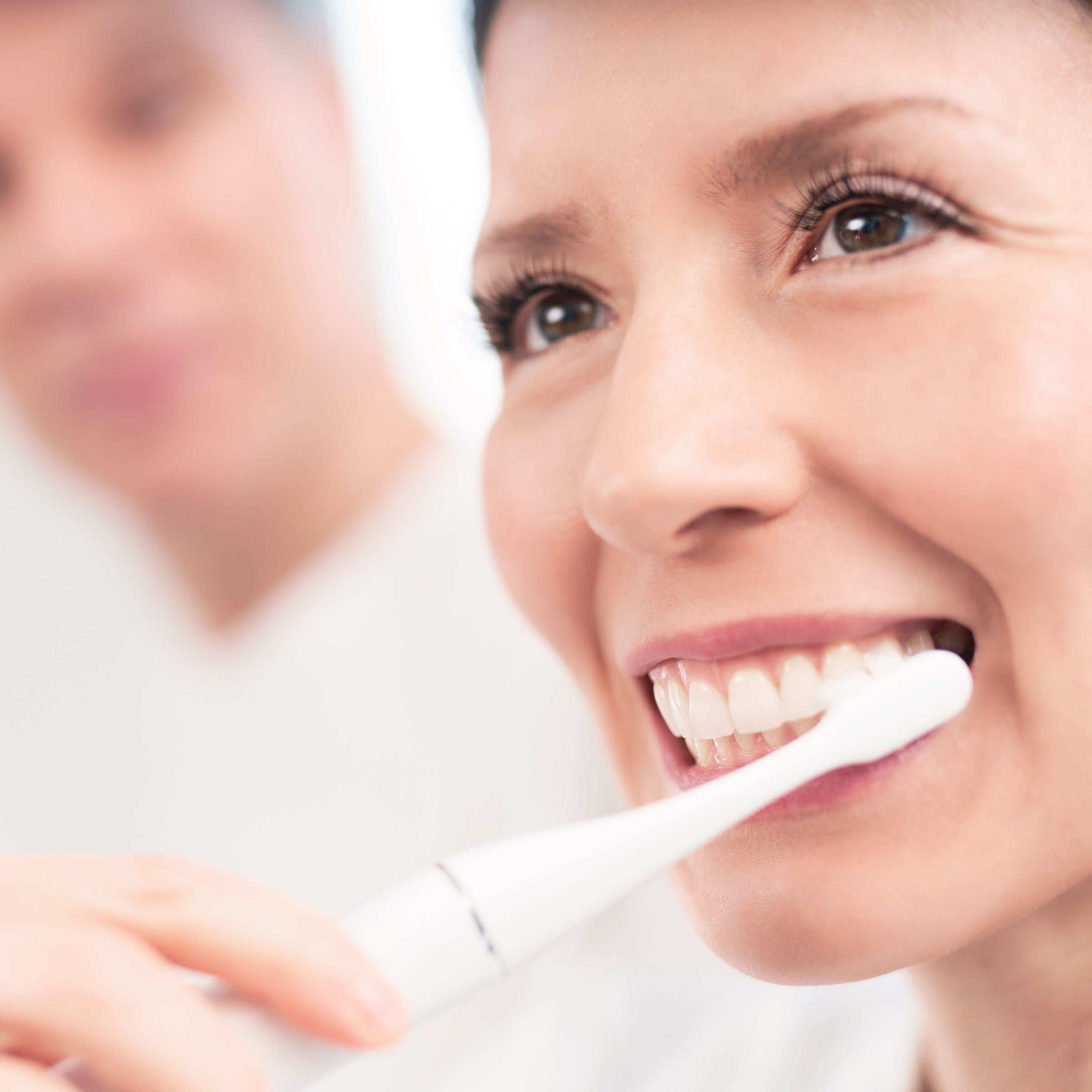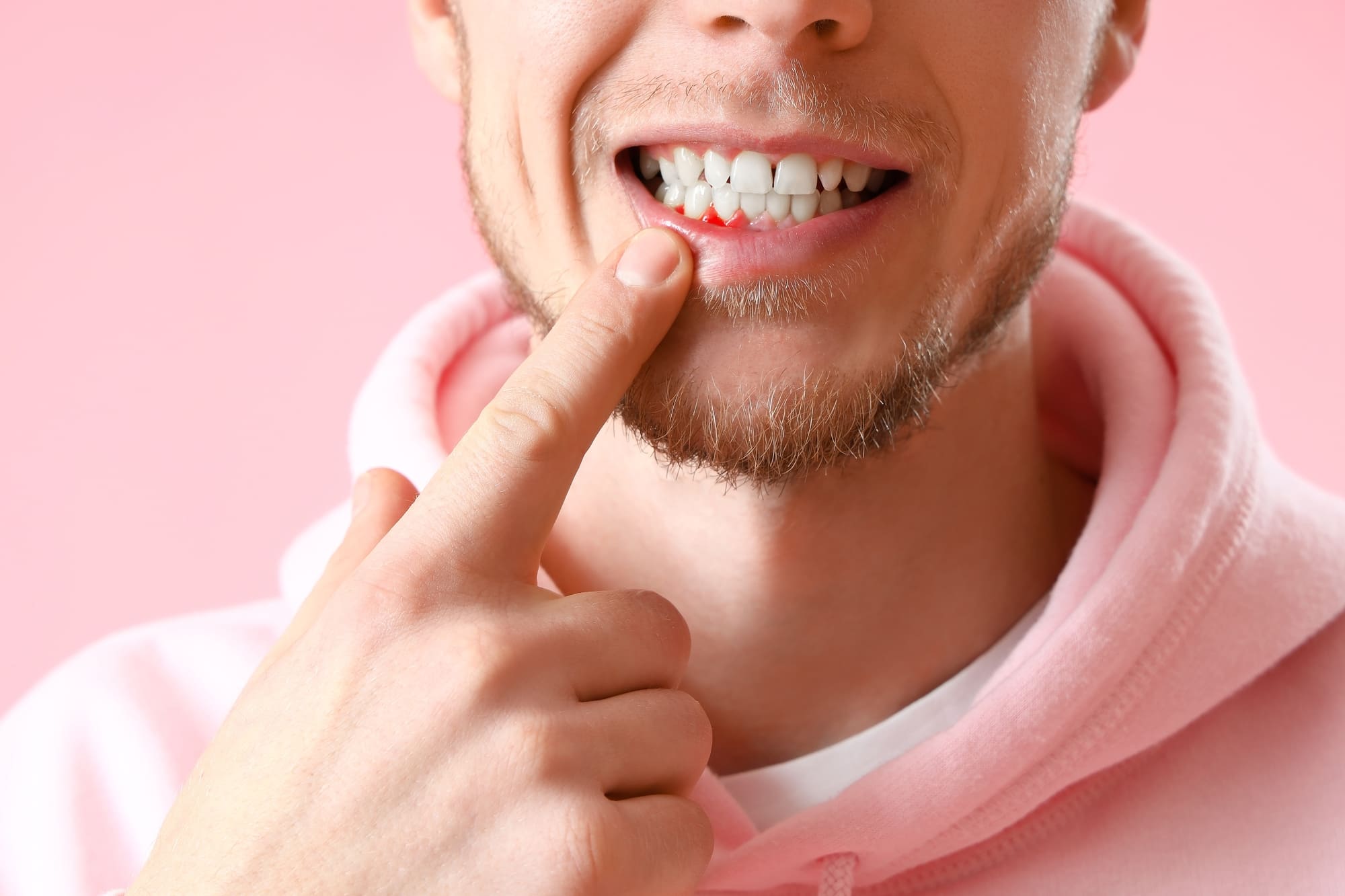Sensitive teeth: causes, symptoms, and what really helps

Sensitive teeth: causes, symptoms, and what really helps
Sharp pain when eating ice cream? A sting when brushing your teeth?
Sensitive teeth can be quite bothersome in everyday life – and can dampen the enjoyment of hot, cold, or sweet foods. But what's behind it? How do you tell the difference from more serious dental problems? And what really helps?
In this article, you'll learn everything important about sensitive teeth: causes, risk factors, symptoms, treatment options, and practical tips for prevention.
How can I tell if I have sensitive teeth?
Visually, teeth often appear completely normal – pain is the first and only warning sign.
A typical sign is a brief, sharp, or shooting pain, triggered by:
-
hot or cold drinks
-
sweet or acidic foods
-
cold air
-
daily brushing
The discomfort usually lasts only a few seconds, but can be very unpleasant – especially if it happens regularly or affects multiple teeth.
Common causes of sensitive teeth
In most cases, the cause is exposed dentin – the sensitive layer beneath the enamel. Normally, a hard layer of enamel protects the nerve channels inside the tooth. If this protection is damaged or the gums recede, stimuli can reach the nerve without hindrance.
The most common triggers:
-
brushing too hard or incorrectly
-
Gum recession (e.g., due to periodontitis)
-
nighttime teeth grinding (bruxism)
-
acidic diet (soda, vinegar, citrus fruits, etc.)
-
reflux or frequent vomiting (stomach acid attacks teeth)
-
aggressive bleaching treatments
-
genetically thin enamel
Or could it be something more serious?
Not every pain means sensitive teeth. Cavities, leaky fillings, or a root canal infection (pulpitis) can cause similar symptoms.
If the pain gets more intense, lasts longer, or occurs without any apparent trigger, you should definitely have it checked by a dentist.
What really helps with sensitive teeth?
The good news: In many cases, you can achieve noticeable relief in everyday life with just a few targeted measures.
7 everyday tips for tooth sensitivity:
-
Change your toothbrush – switch to soft bristles or a sonic toothbrush with a sensitive mode
-
Special toothpaste – for sensitive teeth, helps seal the dentin tubules
-
Gentle brushing technique – no pressure, no horizontal "scrubbing motions"
-
Low-acid diet – rinse with water after eating acidic foods
-
Mild mouthwash – alcohol-free, specifically for sensitive teeth
-
Check for teeth grinding – if needed, get a night guard made
-
Dental treatment – e.g., with desensitizing gels or varnishes
Why a sonic toothbrush is especially well-suited
Sensitive teeth need gentle care—without sacrificing cleaning performance. This is exactly where the sonic toothbrush shows its strengths:
Advantages of a sonic toothbrush for sensitive teeth:
-
Gentle yet thorough cleaning: Up to 72,000 micro-movements per minute clean more effectively than manual toothbrushes—without overstimulation.
-
Almost pressure-free brushing: No scrubbing motions—the device does the work for you.
-
Cleans below the gumline: The so-called fluid dynamics help gently clean even hard-to-reach areas.
-
Easy to use: You don't need to master any special technique — the sonic toothbrush does the rest.
💡 Tip: Our WhyteDOT. WD.1 is specially designed for sensitive needs – with an extra sensitive mode and ultra-soft brush heads.
Conclusion: Gentle is the new thorough.
Sensitive teeth are no reason to panic — but they are a sign to take a closer look. With the right care, a mindful diet, and supportive tools like a good sonic toothbrush, you can soothe and protect your teeth in the long run.
Tip: If you're looking for a toothbrush that combines effective cleaning with gentle care, take a look at the WhyteDOT. WD.1.
It combines medical precision with design excellence — for a fresh, clean feeling without overstimulation.



Comments